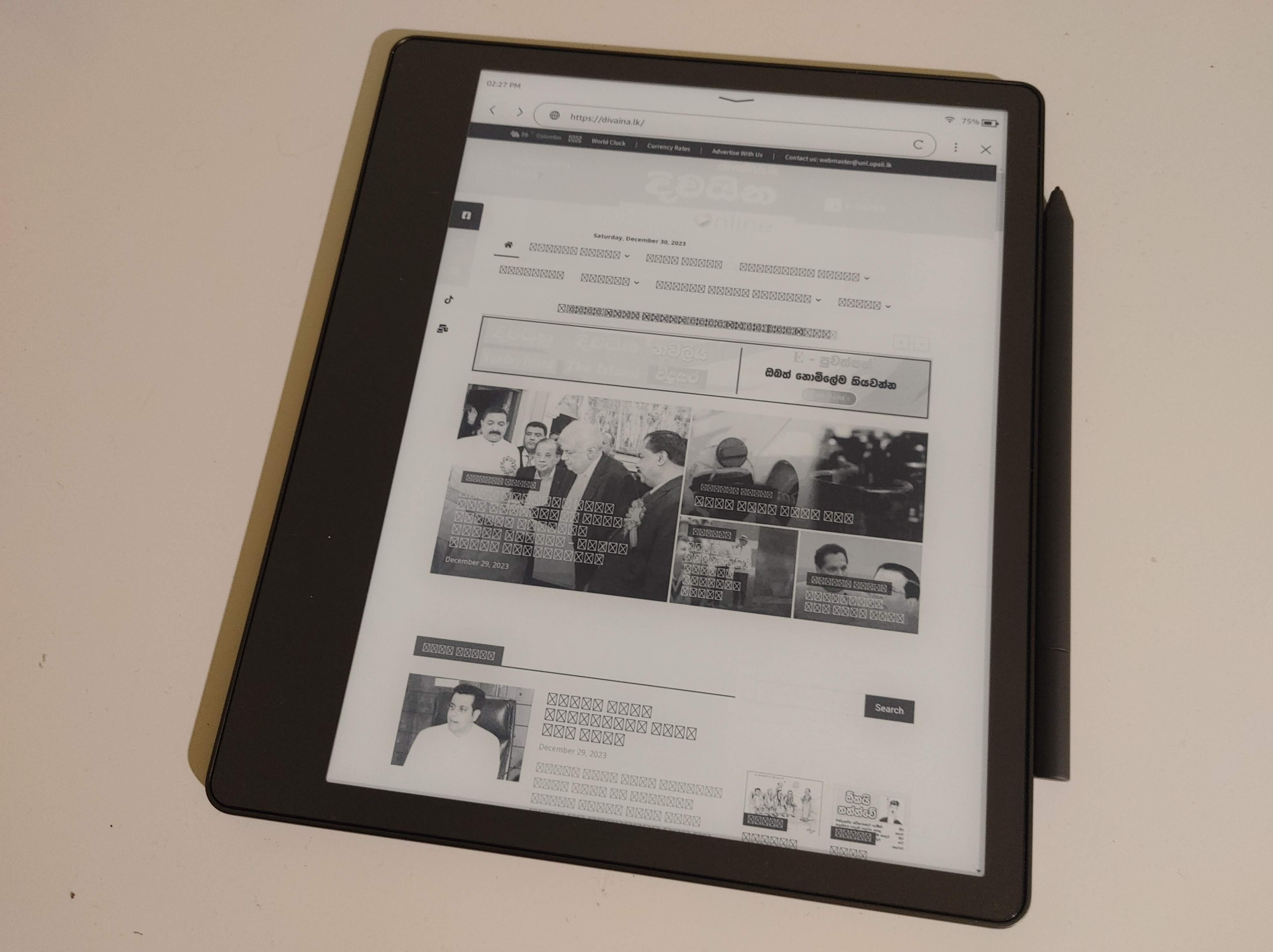As part of my job, I have to read many research papers (which are usually distributed as two-column PDFs with fixed formatting). I like reading other books in my free time as well. To relieve me of the burden of carrying a lot of physical books around and not having to take out the laptop when I want to quickly refer to a document, I thought of getting an eInk reader.
After looking around for what’s available, I narrowed down my choices to Kobo Elipsa 2E, Boox Note Air 2, and Kindle Scribe. A few weeks ago, with a heavy discount from Kindle, I decided to go with the Scribe. After using it mostly for academic reading (and some brief recreational reading) I decided to write down my thoughts about the device.

Good Things
eInk technology has improved a lot. I used to own a classic Nook Reader sometime back. (Read my review of it here) So I knew what I was getting into with the latency and ghosting. These limitations are still there compared to other screen technologies but reduced a lot to become unnoticeable. With the high resolution (300 PPI to be exact) and smooth backlight, the text looks sharp and easy on the eyes.
Good Support for PDFs. We can use the Send-to-kindle service to upload PDFs to the device from a mobile app or from a web browser. They reach the device instantly and render without any problems. Out of close to 50 documents that I read on the Scribe so far, only one failed to render (for some unknown reason). You can also conveniently use the stylus to write notes on the margins of the PDFs that are uploaded this way.
Build quality is great. The device has a matte metallic finish and feels sturdy in the hands. (I ended up getting a folio case to protect the device while on the go, just in case.) The screen real estate is big enough to comfortably read a two-column PDF without using any zoom.

Bad Things
Lack of RSS, Libby, or Pocket support. I heavily use the Libby (formerly OverDrive) app to borrow books from public libraries and university libraries. I also use the Pocket service to save long articles from the web and read them later. While Kobo devices support these services natively in their eReaders, Kindle Scribe supports neither. It’s a bummer because both of these are free services that I use a lot to satiate my need for reading. As a rudimentary workaround for the lack of Pocket integration, and for checking RSS feeds I use Scribe’s built-in web browser which brings me to the next point.
Lack of Unicode Support. One of the first things I do with any device that I get hands-on is check its Unicode compatibility (as you can see here and here). Unfortunately, Kindle Scribe gets zero points here. I checked with a few non-roman alphabets in Scribe’s browser and all of them appear as small boxes. Come on, Amazon! It’s 2023! I understand the need to keep resource usage minimal and therefore keep the browser features limited. But, Unicode is a basic necessity in a web browser at this point!
Multi-tasking Support. A basic use case when doing intensive reading is taking detailed notes about what you just read. Although Kindle Scribe has all the primary ingredients to make that happen, the user experience is not well implemented. There is reading support for all sorts of eBook formats. There is note-taking support with a well-made stylus and notebooks of different templates. However, to get to a notebook while reading, you have to close the currently reading document and click through multiple screens. You may lose the train of thought by the time that you get to the place to write after navigating the not-so-fast UI.
No two-way cloud syncing. You can currently send PDFs to the device, and e-mail back the PDF with notes and highlights when you’re done with reading on the device. However, if you’re ingesting a document over a long period you need to avoid the hassle of sending the marked document back and forth. Proper syncing of documents and notebooks to a cloud service such as Google or Dropbox is a must-have feature these days.
In conclusion, I’m enjoying Kindle Scribe so far, and finding great use of it. All the drawbacks that I mentioned above can be fixed via software updates. I’m hoping that these get fixed in future over-the-air updates. However, if the lack of these features is a dealbreaker, you may find eInk tablets that run on Android (from vendors like Boox) to be useful.